Cura Urbi: Students at Jesuit High Schools “Care for the City” of Baltimore
BY AKEEM LYNE | September 19, 2017
Editor’s Note: This piece was written by Akeem Lyne, a 2017 graduate of Cristo Rey Jesuit High School Baltimore, in collaboration with Justin White, ISN board member, former theology teacher at Cristo Rey Baltimore, and co-founder of Cura Urbi. Justin White currently works in the Ignatian Mission and Identity office at Loyola Blakefield High School in Towson, MD.
When I first joined Cura Urbi during the summer of 2016 as a rising senior at Cristo Rey Jesuit High School in Baltimore, I went in not really sure what the experience would bring. Cura Urbi, Latin for “care for the city,” is a collaborative, service-learning immersion that takes place over the course of two weeks during the summer. The program brings together rising seniors from Cristo Rey Jesuit, a high school located in Baltimore City, and Loyola Blakefield High School, located in Baltimore County.
Cura Urbi was created by Justin T. White and Vinny Marchionni, S.J., who both served as teachers at Cristo Rey, as a response to the unrest in Baltimore after the death of Freddie Grey.
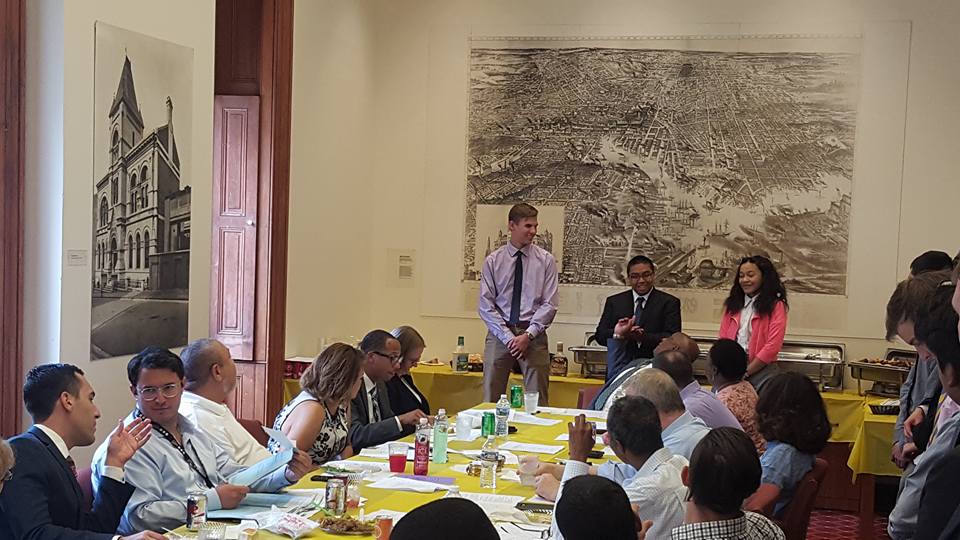
Ignatian Scholars Kennedy Hayden, John Pejo, and Hayden Young spoke on behalf of the entire group during an advocacy visit meeting with Baltimore’s City Council.
The program rests upon three pillars: collaboration, service-learning, and advocacy. Students, called Ignatian Scholars, in the first week receive lessons on various social justice topics from hired teachers, called Education Coordinators (ECs). We then engage in service opportunities in the city corresponding to the topic learned that day.

Ignatian Scholar Richard Ortega at Moveable Feast, an organization serving healthy meals and companionship to individuals and groups with terminal illnesses.
Topics included public health, education, environmental justice, and housing. In the second week we met with Baltimore City Council and Maryland State Government to talk about our experiences and present some of our concerns. The second week also involves an advocacy project, such as writing letters to the elected officials we met with, creating our own bills, writing blogs, and filming video blogs for the Cura Urbi website.
I have participated in service opportunities throughout my years at Cristo Rey, but I was not sure about the education and advocacy side of things. Through the two weeks, both students and ECs learned a tremendous amount about how injustices have come about in Baltimore City. When the program ended I realized that the two weeks changed how I look at the city I had lived in all my life. I started to notice different things, like how many abandoned homes I would drive by on my way to school. I did not know before joining Cura Urbi that Baltimore City has about 17,000 vacant homes. I had the opportunity to write a letter to Councilman Henry concerning this issue and how we, as a community, can fix the problem.
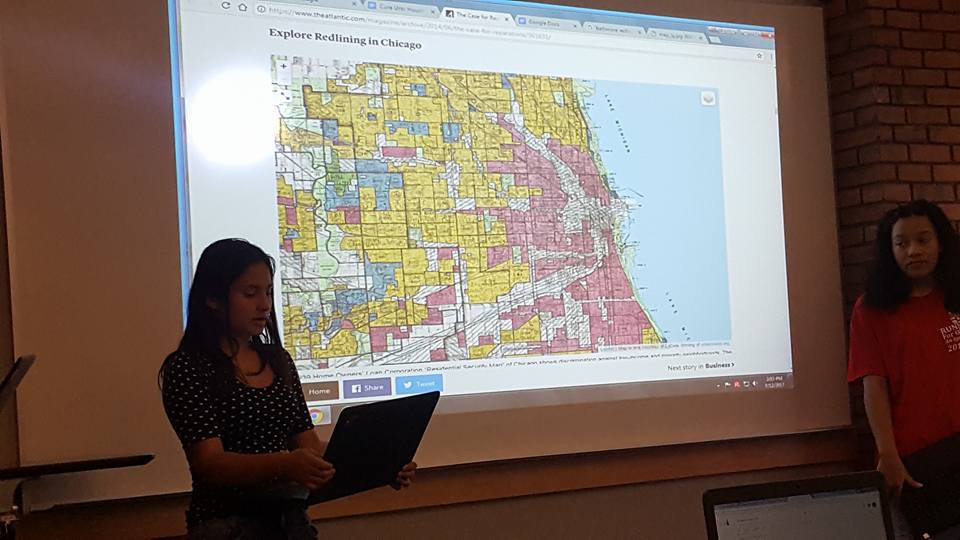
Ignatian Scholar Riccy Amador presents to the group about redlining.
I became very interested in “food deserts” through my weeks with Cura Urbi, and began to notice when I drove through them. Food deserts are areas where there is an absence of fresh fruit, vegetables, and other healthful whole foods. This is largely due to the lack of grocery stores, farmers’ markets, and healthy food providers in a neighborhood. My interest in food deserts extended beyond the two weeks. When I had a chance to speak to Cristo Rey Jesuit’s Board of Directors about Cura Urbi, one of the directors asked what I meant by the term “food desert”. So, not only did I leave the program with more knowledge, but I was able to share that knowledge with others.
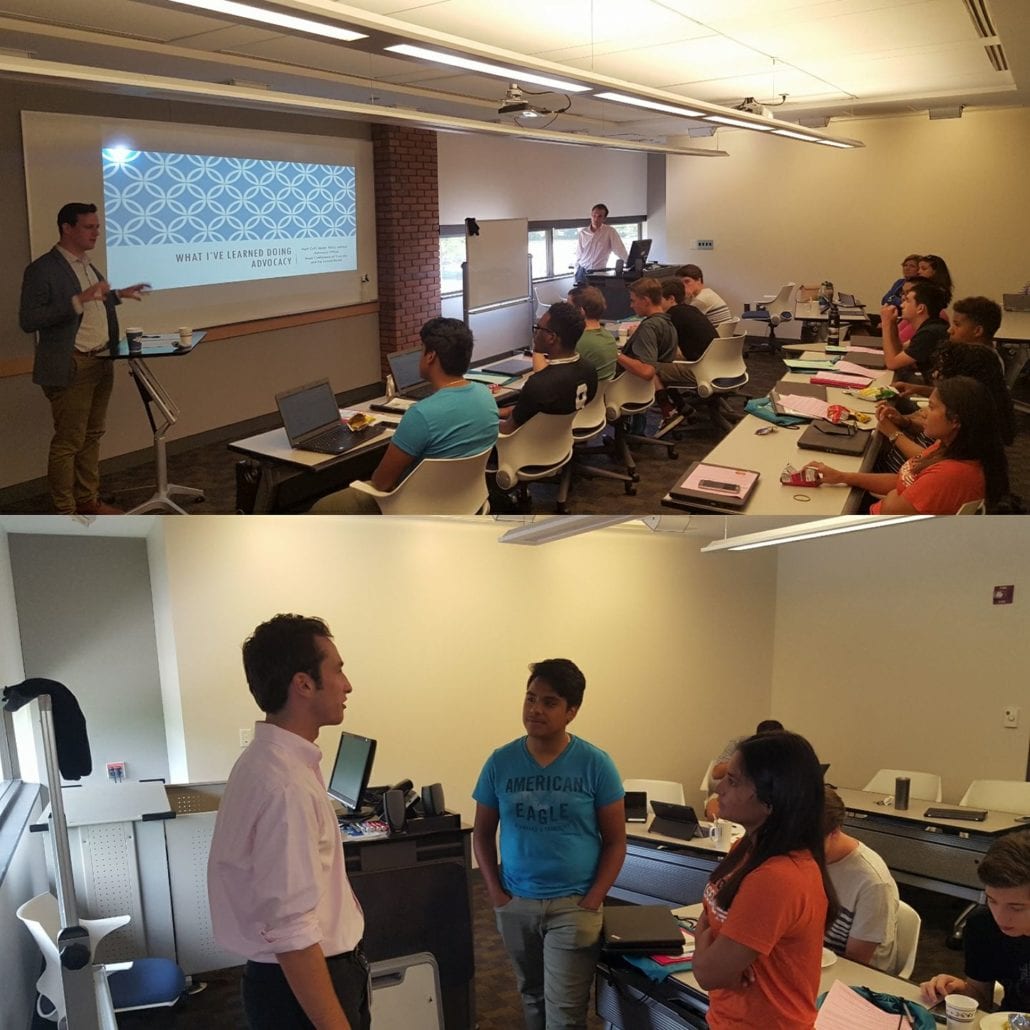
Jesuit Conference Policy Associate and ISN board member Matt Cuff, and James Pitsor, a rising senior at Creighton University, spoke to the Ignatian Scholars about cultivating a commitment to advocacy.
I loved Cura Urbi and its mission so much that I decided to join the program again this past summer after I graduated from Cristo Rey Jesuit. This time I was more informed. I knew what to expect, and I felt more confident about learning and advocating for justice. The group size grew from just six students to eleven students (four from Cristo Rey and seven from Loyola Blakefield). Most of the students this year (nine to be exact) lived outside of the city, but still were engaged in learning about issues affecting the city. During my second go around with this program, some of the same information was taught, but I received it differently. After an entire academic school year, my knowledge was enhanced even more because these topics—homelessness, immigration, and the environment—were talked about in some of my senior classes.
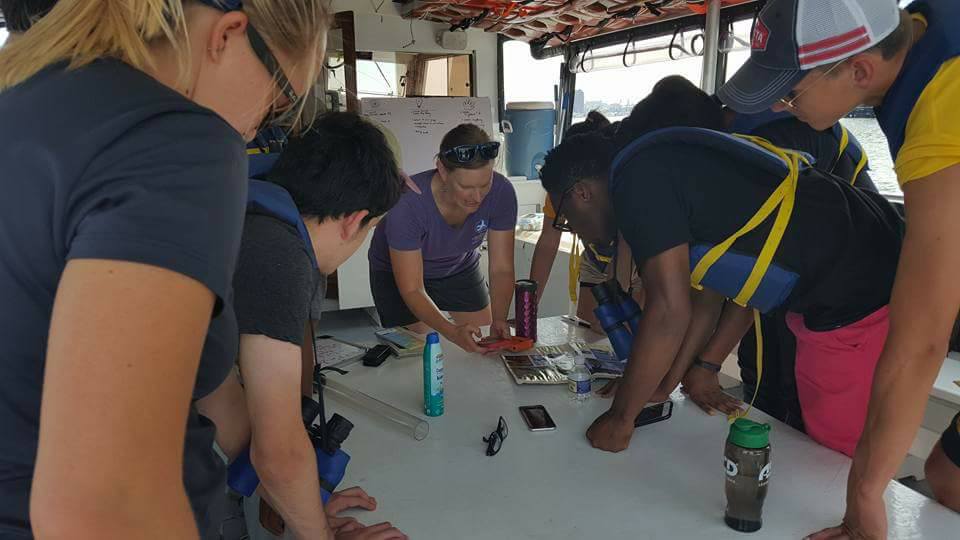
The team took water samples of the harbor with the Chesapeake Bay Foundation.
This year, a focus on immigration was added to the program and I found myself being really interested in the topic. It is a big issue in the U.S. right now, and it is also a topic that hits very close to home for me and many of my peers. My family is not from the United States, so I have witnessed firsthand the struggle of being an immigrant in this country. Many of my Hispanic friends have also struggled, so we are respectfully vocal about the issue when brought up. Studying immigration through Cura Urbi has influenced my decision to major in Spanish in college. I want to be accessible to other people and advocate with and for them, and studying Spanish is a step closer to that goal.
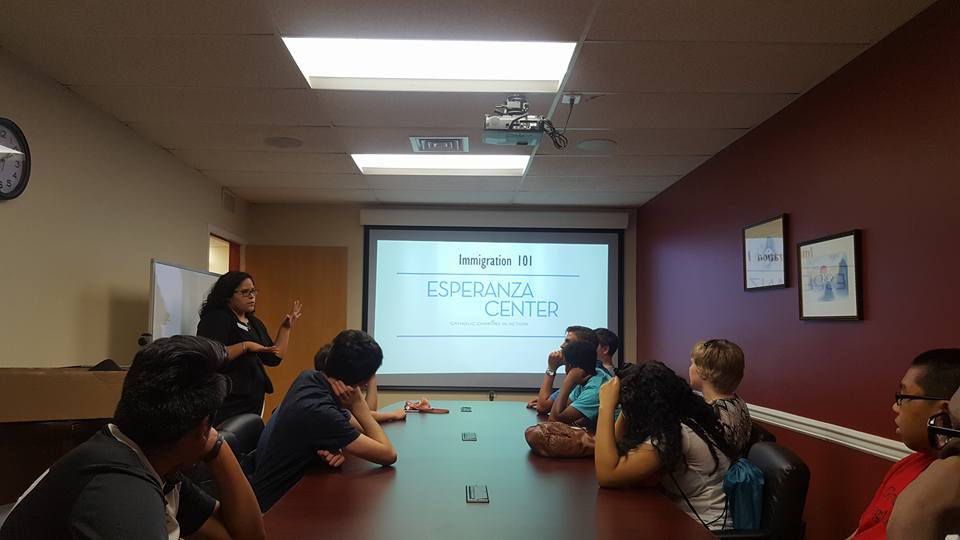
Ignatian Scholars learned at the Esperanza Center how they can be advocates for those who are immigrants.
Another highlight for me this year was our trip to Annapolis to meet with Delegate Brooke Lierman with Maryland’s State Government. She was so happy to hear from us and to hear our concerns.

Scholars met with Maryland State Delegate Brooke Lierman to learn about her initiatives and to ask questions.
Leaving this program after two summers and now entering my first year of college, I have truly grown. My engagement in Cura Urbi has made me a more informed citizen, and it has shaped my identity as an Ignatian Scholar. I now see the city of Baltimore on a broader scale, and have come to love this city and serving as an advocate for my home.
Akeem Lyne is from Baltimore, Maryland and is a graduate of the class of 2017 from Cristo Rey Jesuit high school. He currently attends Saint Joseph’s University where he is studying biology.

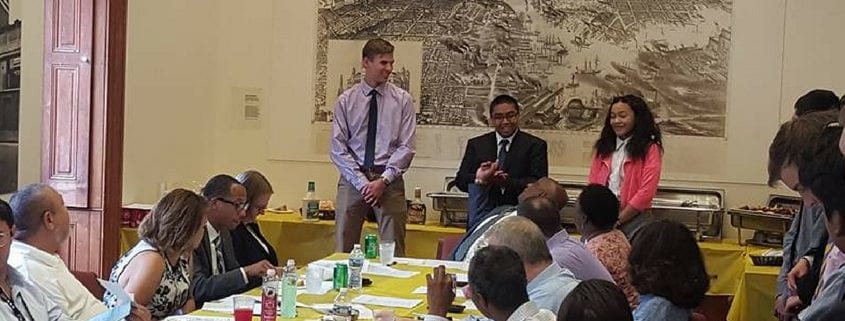





Cura Urbi is a fine initiative.